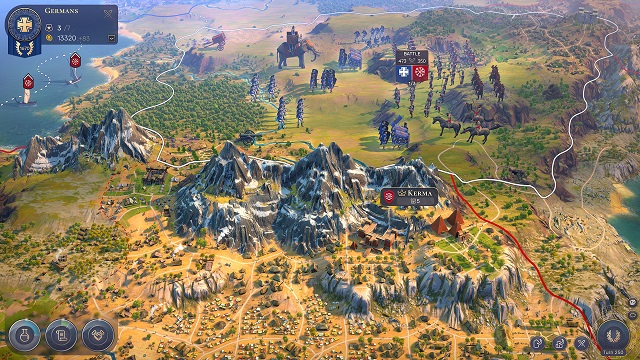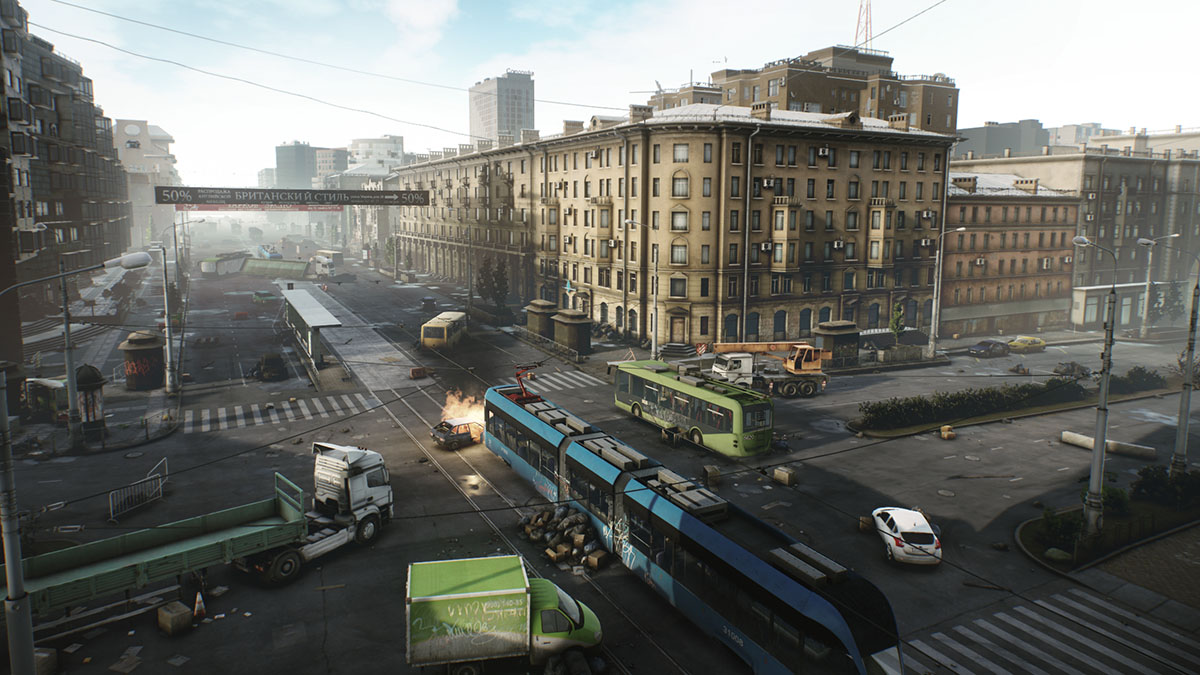Sun Tzu once wrote that “Victorious armies win first and then go to war, while defeated armies go to war first and then seek to win.” And for anyone who’s played Humankind and found themselves clashing with another civilization without fully understanding how the game’s combat system works knows, Sun Tzu was right.
So how do combat and war work in Humankind? This guide seeks to explain that and give you the upper hand when either you or another civilization seeks to conquer the world.
Outclass Your Enemy
The first and most important thing to learn about confrontation is having the best soldiers. The oldest adage in video games, “big number strong, small number weak,” is definitely in play here.
First and foremost, make sure you keep up with the AI in terms of discovering techs that unlock new military units in each age. In particular, pay the closest attention to close-quarters infantry, since it’s the backbone of your army. The same goes for siege weapons for quickly overrunning walled cities through the Medieval Age.
In addition, don’t neglect city fortification techs. Technologies like Fortifications, Feudalism, Centralized Power, Nationhood, and finally Insurrection Theory can, when combined with building stone walls in your cities, make them almost impregnable against all but the most determined AI assaults.
On top of that, don’t forget that the little “+1” on a shield icon for a technology in the tech tree, which allows you to field armies with one additional unit, up to a maximum of 8.
It’s always good to choose civics that favor “Homeland” over “World”. World gives you extra food, which is nice, but it’s nothing you can’t just build a farming district for. Homeland, when the slider is all the way to the left, gives you a +2 to combat effectiveness, which is gigantic in the earlygame and still useful at any point on the tech tree.
Field Combat Fundamentals

The most basic of all battles in Humankind is the field battle. If you don’t have a Non-Aggression Pact (even if you’re not at war if you meet an opponent on a neutral tile), simply march your army up to what you want dead and start a fight.
Bear in mind that the high ground matters. If you can attack from a better terrain position, you’re far more likely to win, since fighting downhill grants a huge terrain advantage. Likewise, deploying your troops on a river debuffs units with -3 strength penalty.
When the battle begins, each army lines up across from each other, with you and the AI trading turns based on who initiated the conflict.
Note that an enemy’s zone of control will keep you from moving more than one tile through terrain adjacent to that enemy, but you can move your own units through other controlled tiles to surround the enemy.
There are bonuses for both having allies next to you when you attack (simulating flanking maneuvers) and attacking an enemy directly from the rear.
Also, ranged units other than Ancient Age archers (which have the “indirect fire” trait) need clear line of sight to shoot the enemy. The best way to achieve this is to have ranged units on the highest ground possible and have them hold that ground.
Obside Diem, Siege the Day
Siege battles are just like regular field battles except for some special rules:
The longer you wait to assault the city, the more siege weapons you can build if you have the technology and it’s before the Industrial Age. This also means you’ll have fewer enemy garrison troops to fight as the game simulates the city garrison being starved out. You can often take a city without bloodshed if you’re patient.
Cavalry are completely useless in sieges since they can’t scale walls and get inside the city. Save them for field armies. Along the same lines, infantry units must start adjacent to a wall to get inside the city and nullify the defender’s fortification bonus, so position your troops accordingly.
Siege equipment is disposable, so if it gets damaged or destroyed, that’s actually wasted effort on the part of the enemy. Use your battering rams to break down the walls or your catapults or trebuchets to destroy defenders inside the city, but focus your unit defense on something like archers or vulnerable infantry units.
Later in the game, gunpowder units can, if they have an effective range, ignore wall defenses. Setting them up on a ridge is as effective in the game as it is in real life.
In the Navy, You Can Sail the Seven Seas
Naval combat is just like fighting on land except for a few notable exceptions.
Transport ships are sitting ducks not just against purpose-built naval warships but against ranged units on land as well. It’s possible for a good warship to go 1-on-4 or even 1-on-5 against an army of transport ships and win, so having them patrolling near your coasts is absolutely essential.
Even if the AI armies are too occupied with fending off your invaders to come after your shores, the Independent People have a nasty habit of raiding island outposts, and it’s a whole lot easier to kill them at sea than on land.
All of the same ranged unit restrictions apply to ships since they’re using arrows or cannons to do damage. Although, since even one-tile-over attacks count as ranged attacks, and the same rules apply about positioning as they do for land units, hem the enemy in and pound them with broadsides getting flanking bonuses.
While naval units can technically participate in sieges, ships almost never have a chance to actually fire on cities due to movement and ranged combat rules, but if the enemy’s foolishly put their city on a coast and not on a ridge, fire away.
War from the Sky
Once you have air units, you can set up an Air Strike to attack enemy cities and outposts. Conversely, you (or the enemy) can set up an Air Patrol with fighter planes to intercept incoming aircraft and shoot them down before they can do damage.
The nice thing about airstrikes is that they can severely damage the enemy’s economy by targeting districts and ruining resource production. The bad thing is that doing so can make it harder to take over and absorb a city because it won’t be in the best economic shape.
And those are some of the best tips for dominating in combat and winning a war in Humankind. Though the only true way to win in Humankind is to gather more Fame than your rivals, conflict is one of the end conditions that can bring the game to a close.








Published: Aug 26, 2021 11:35 pm